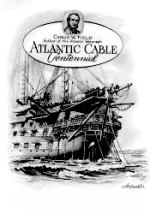![]()
|
|
|
|
|
|||||

Success Stories
Information technologies transform rural town
In the small coastal town of Canso, Nova Scotia, "multimedia" means boundless opportunity. The Information Age has renewed the initiative and enterprise of the community by stimulating the economy and empowering its youth.
Funding from Industry Canada's Community Access Program (CAP) and SchoolNet Digital Collections program have helped the remote town take flight in cyberspace. Enabled by modest government funding, the programs have respectively provided Internet access and youth employment opportunities in the multimedia sector.
Troy Greencorn, a young entrepreneur and Deputy Town Clerk, spearheaded the local CAP project, after which he hired unemployed youth to produce a series of web sites based on local history for the Digital Collections program. Greencorn used government funding and local resources to promote the Town of Canso, employ local youth, and maximize the potential of his business.
Two projects with a strong local economic interest have been completed to date. They cover the first transatlantic cable which terminated in Canso/Hazel Hill, billed as the original Information Highway, and the early days of the co-operative movement in Nova Scotia which led to the development of the regional library system and the first co-op housing in North America. A third project is underway on the Sable Offshore Energy Project.
By digitizing collections from local libraries and museums, thirteen youths have gained valuable high tech skills while using the Internet to preserve and document the region's history. "Most of the students were mowing grass as a summer job," Greencorn says, "now they're doing meaningful multimedia work." And, as Greencorn points out, "Every job leads to revenue spin-offs in the community."
Greencorn says SchoolNet Digital Collections has been one of the leading youth employment programs in the region. For instance, youth in Glace Bay, Cape Breton Island participated in "The Co-operative Movement in Nova Scotia" project with their partners in Canso.
Jennifer Kanne, a student at the University College of Cape Breton, was a member of the project team in Glace Bay. "The project was great for the area because nothing like this had ever been done in Glace Bay," she says. "We're one of those small communities that wouldn't have been heard of without programs like SchoolNet Digital Collections."
Local businesses have also thrived with greater connectivity. For example, the local fish processing plant, and largest employer in the region, has found that the Information Highway makes communication at great distances much easier. The Plant now relies heavily on the Canso CAP site to communicate with a sister plant in Newfoundland.
Canso has proven that information technologies can be used to revitalize local economies by capitalizing on the low cost and reach of the technology. "In two years, the CAP site has taken this community from being a technological have-not, to a community that is leading edge," reports Greencorn. "We've gotten out of the starting block and we're in the lead."
The people of Canso are drawing on their own history to map out a future for their community in the age of the Information Highway. They have shown that young people's creative energies and talents can be used in conjunction with the hidden treasures of our libraries, museums, archives and other institutions to create new business and employment opportunities in small communities in Canada.
Greencorn's firm, TGIS Consulting, is leading by example. He freely credits SchoolNet Digital Collections with the growth of his firm and its multimedia focus: "Two years ago, my company did no HTML, no connectivity work. Now it accounts for at least one-third of my work."
Local entrepreneurs are networking to maximize their productivity and profile. For instance, Greencorn has developed a partnership with the University College of Cape Breton as a result of his work in the "Co-operative Movement" collection. For a small fee, the university handles the TGIS payroll and contracts, and a deal is in the works to provide distance education across the World Wide Web.
Even as work continues on the "Sable Offshore Energy Project" collection, Greencorn has also agreed to a contract with the natural gas company behind the project.
Moreover, Greencorn recently partnered with Guysborough County to provide a web page for the first "Stan Rogers Folk Festival" in Canso. A record 5000 people attended the concert while mobilizing nearly half the community as volunteers. "The festival garnered a lot of attention in Canada and around the world because of the web site," he says.
A high tech community has prospered around the development of the CAP site and the SchoolNet Digital Collections program, and it only promises to get bigger. Velda Richardson, a youth employed by the "Transatlantic Cable" project, shortly thereafter found employment at the Canso Historical Society where she created a genealogy database and developed a virtual tour of the local museum.
Many of the youths hired through SchoolNet Digital Collections have since pursued university studies in the multimedia field. "We've been able to develop a high tech labour market here," says Greencorn. "Those are jobs that wouldn't have existed otherwise."
But beyond the economic benefits, Greencorn affirms that the people of Canso are proud of the SchoolNet Digital Collections projects. They are proud because they feel they are making history by recording their history.
Visit the SchoolNet Digital Collections World Wide Web Site at http://collections.ic.gc.ca/
|
Updated: |
 Canso, Nova Scotia
Canso, Nova Scotia